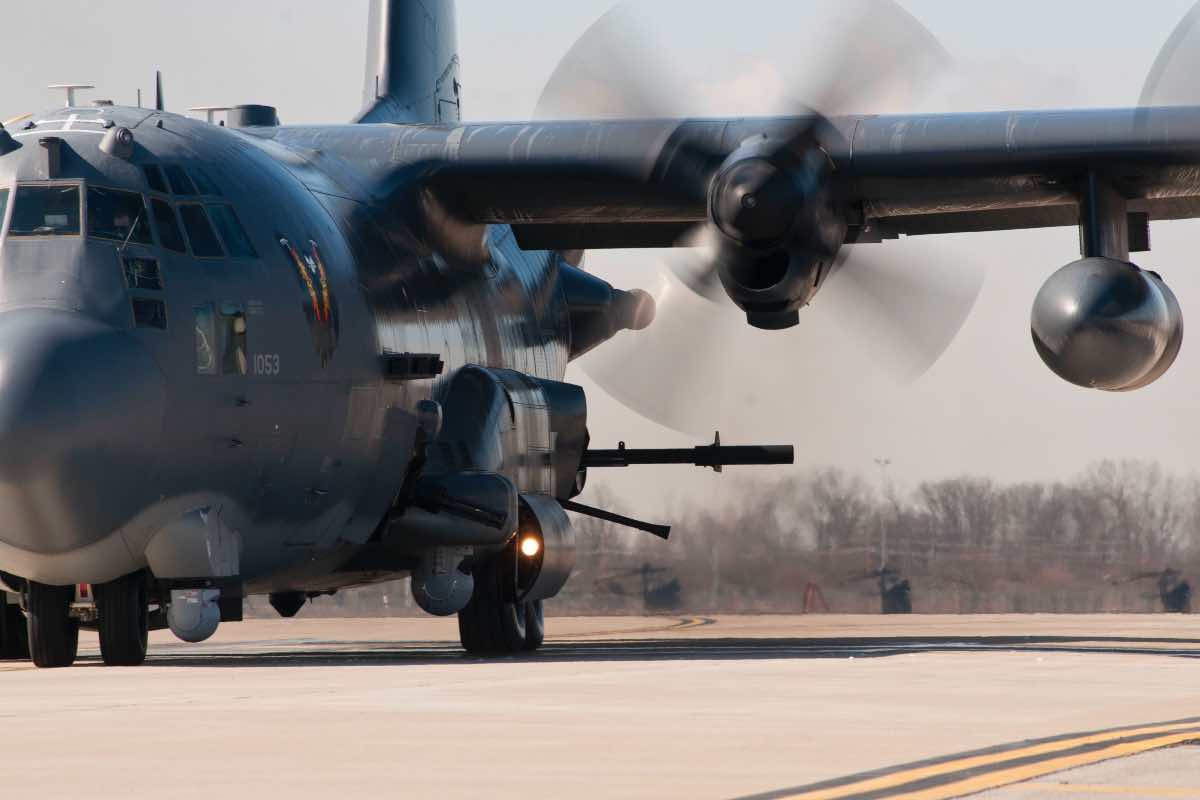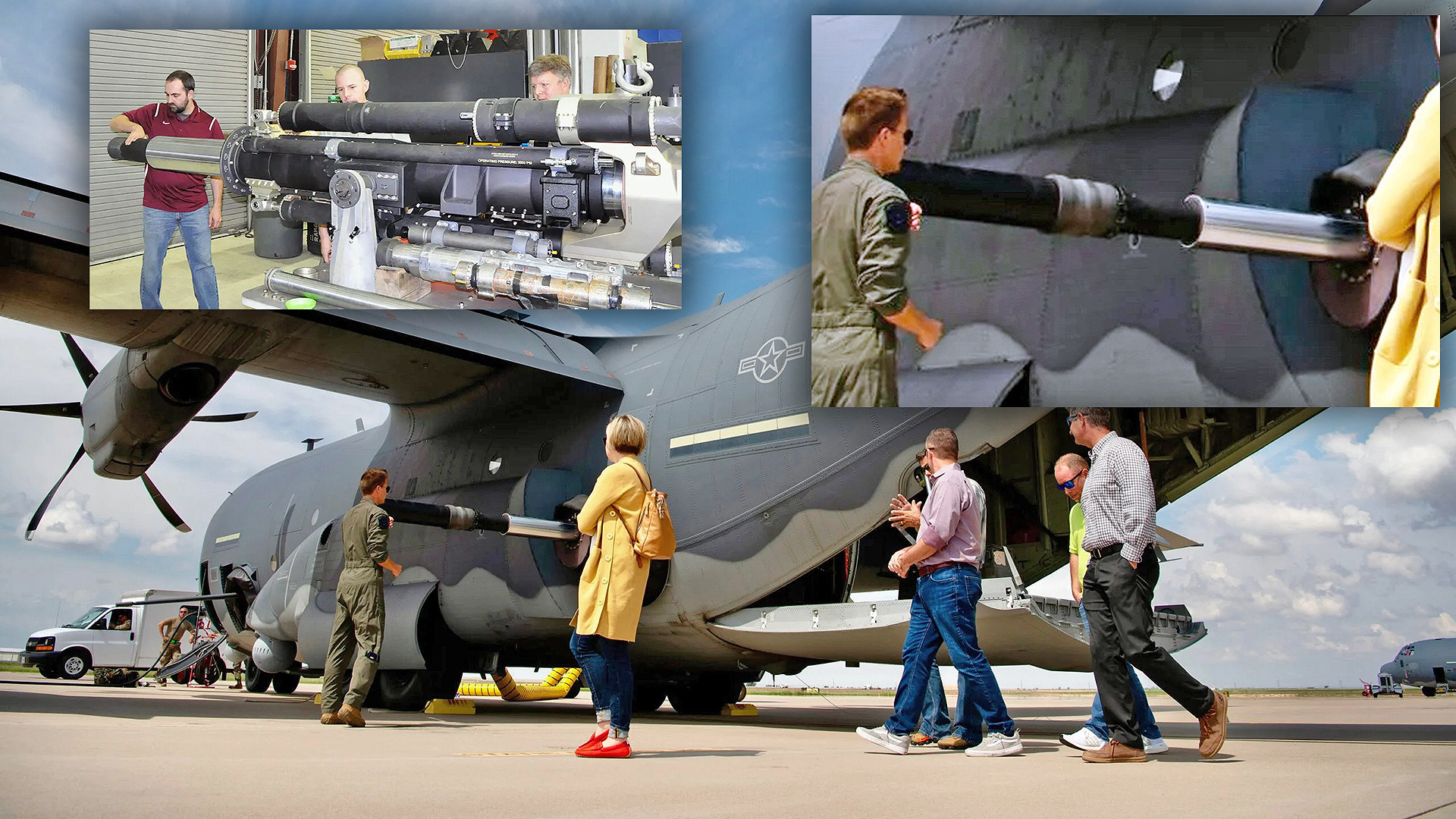105mm Ac 130 - The Lockheed AC-130 Gunship is a heavily armed, long-range, ground-attack variant of the Hercules C-130 fixed-wing bow. It carries a wide range of attack weapons integrated with sonar, navigation and fire control systems. Unlike other modern fixed-wing military aircraft, the AC-130 relies on nothing but visuals. Because its wide profile and low operating altitude of around 7,000 feet (2,100 m) make it an easy target, its close air support missions are usually flown at night.
The airframe is being manufactured by Lockheed Martin, while Boeing is converting to gunships and support aircraft.
105mm Ac 130
Developed during the Vietnam War as "Project Gunship II", the AC-130 replaced the Douglas AC-47 Spooky, or "Gunship I". It is the only US Air Force operator that uses the AC-130U Spooky and the AC-130W Stinger II
Watch: Ac 130 Spectre
Close air support functions include supporting ground protection, supply protection, and urban operations. Interdiction air missions are conducted against targets and targets of opportunity. Defense force missions include the defense of air bases and other facilities. AC-130s based at Hurlburt Field, Florida, and AC-130Ws based at Cannon AFB, New Mexico; artillery guns can be deployed all over the world.
The team is part of the Air Force Special Operations Command (AFSOC), which is part of the United States Special Forces.
The AC-130 has an unpressurized cabin with a gun to fire on the port side of the fuselage. During the attack, the gunner performs the pylon shift, flying in a large circle around the target, so that he can fire on it for a much longer period of time than in a conventional beam attack. AC-130H Specter armed with two 20 mm Vulkan M61 cannons, one L/60 Bofors 40 mm cannon, and M137 105 mm cannon and M37 mechanism repel the M102 howitzer; after 1994 the 20 mm guns were removed. The updated AC-130U Spooky has a single 25 mm GAU-12 cannon equivalent to two 20 mm spectrometer cannons, an improved fire control system and increased ammunition capacity.
The new AC-130J is based on the MC-130J Commando II special-purpose transporter. The AC-130W Stinger II is a modification of the C-130H with upgrades, including a precision envelope.
Russian Military Revised Plans For A Future Special Purpose Gunship
During the Vietnam War, the Hercules C-130 was selected to replace the Douglas AC-47 Spooky Gunship (Project Gunship I) to improve mission duration and increase weapon-carrying capacity. Capable of flying faster than helicopters and at high altitude with excellent delay time, the AC-47's use of a turn pylon allowed it to deliver continuous, accurate fire at a single point on the ground.
In 1967, JC-130A 54-1626 was selected for conversion to the prototype AC-130A Gunship (Project Gunship II). Modifications to the Wright-Patterson Air Force Base were made by the Aeronautical Systems Division. A night vision telescope was installed directly in the front door, the first infrared radiation technology was well placed in the front part of the left wheel, with miniguns and rotary guns fixed down and down near the left side. An analog fire control computer prototype was made by hand by RAF Wing Commander Tom Pinkerton at the USAF Avionics Laboratory at Wright-Patterson AFB. Flight tests of the prototype were initially conducted at Eglin Air Force Base, followed by further tests and modifications. In September 1967, the aircraft was declared ready for combat testing and flew to Nha Trang Air Base, South Vietnam for a 90-day deployment.
The AC-130 was later supplemented by the AC-119 Shadow (Project Gunship III), which later proved to be ineffective.

The surprise package upgrade contains the latest rotary autocannon and 40 mm grenade launchers, but no 7.62 mm close-up armor. A surprise package configuration on the test bed for the AC-130E's avionics and armament systems. In 1970, more than 10 AC-130s were purchased under the "Pave Front".
Ac130 Gunship Ac 130
In the summer of 1971, the AC-130 was converted to a Pave Front configuration and adopted the new nickname "Thor". The conversion of C-130Es to AC-130Es for "PAVE Spectre" followed.
Regardless of their purpose, the aircraft are more common than the team's flagship, the Spectre.
In 2007, AFSOC began a program to upgrade the Army's AC-130s. The test plan was to replace the 25 mm GAU-12/U and 40 mm Bofor guns on the AC-130U with two 30 mm Mk 44 Bushmaster II cannons.
In 2007, the Air Force tested four AC-130U modified weapons platforms for the Bushmasters. These are designated AC-130U Plus IV or AC-130U+4. AFSOC, however, has withdrawn its plans to install new cannons in its fleet of AC-130Us. He removed the guns from it and restored the original 40mm and 25mm guns and returned the aircraft to combat duty.
Lockheed Ac 130j Ghostrider
Brigadier General Bradley A. Heithold, AFSOC's director of planning, programs, requirements and assessments, said on August 11, 2008 that work had been suspended because of problems with the precision of the Bushmaster in tests "at the height that we used." Scheduling considerations also drove the decision, he said.
Plans were made to replace the 105 mm cannon with a thigh-loading 120 mm M120 mortar, and to give the AC-130 the ability to launch the AGM-114 or Hellfire missile, the Advanced Precision Kill Weapon System (based on the Hydra. 70 Weapon), or the Viper Strike bomb. to slide
In 2010, the Air Force awarded L-3 Communications a $61 million contract to add precision strike packages to eight MC-130W Combat Spear special mission aircraft
I gave them a gunship-like attack; Such equipped MC-130Ws are known as Dragon Spears. AFSOC armed these aircraft for the high operational demands on the AC-130 guns for the new AC-130Js three times in service.
Lockheed Ac 130 Gunship
The precision strike package consists of 30 mm cannons and various precision ammunition. The gates on the Jupiter wing pylon are mounted for four Hellfire missiles, SDBs, or SDB IIs under each. T Common Launch Tubes (CLTs) are mounted on the rear ramp to fire Griffin A missiles; other missiles are stored in the aircraft which are sent back into flight.
CLTs can be fired by other small munitions that can be in 6 in (15 cm) diameter, 48 in 1.2 m long tubes.
The AC-130J Ghostrider comes from a 2011 initiative that sought to acquire 16 new weapons based on the MC-130J Combat Shadow II special operations transport equipped with a "precision package" to provide attack capability, $1.6 billion is requested for the fiscal year. 2011 through 2015. This was to increase the size of the fleet to 33 aircraft, a net increase of eight after the retirement of 800 aging AC-130Hs. The first developer was purchased in fiscal 2012, followed by two in fiscal 2013, five in fiscal 2014, and the last eight in fiscal 2015.
The decision to keep the C-130 comes after funding for 16 C-27Js was removed from the 2010 fiscal year.
Going For Guns
On January 9, 2013, the Air Force began converting the first MC-130J Conflict Shadow II into the AC-130J Ghostrider.
The AC-130J has two planned upgrades: the Block 10 configuration includes an internal 30 mm cannon, small diameter bombs and laser-guided missiles loaded from the rear door; and the Block 20 configuration adds a 105 mm cannon, large-scale infrared aircraft, cruise missiles and radio frequency missiles.
The Air Force decided to add a 105 mm gun to the AC-130J in addition to 30 mm guns and smart bombs, more accurate and cheaper bombs than those dropped on SDBs. AFSOC is actively pursuing a direct-ergy weapon on board the AC-130J instead of a 30 mm gun by 2022;

Similar to the previous Advanced Tactical Laser program. It is to produce a beam of up to 120 kW, or in power ev 180-200 kW, weighing about 5,000 lb (2,300 kg), destroy anti-weapon missile defense and destroy communications towers, boats, cars and offensive planes. .
Close Air Support Debate: We Go Inside An Ac 130 To See If The Gunship Is Still Relevant
Other potential additions include an active dialing system to perform aerial surveillance of people, and small unmanned aerial vehicles launched from common tubes to provide remote video feed and coordinates to weapons operators via cloud cover.
Off-Board Ssor drones (TOBS), called Imperial Off-Board, fly through orbit programmed to check targets that cannot be seen by aircraft from weather or air defense positions.
AFSOC will initially use the Raytheon Coyote small UAV for the TOBS mission because it is an off-the-shelf project with a duration of one hour, but plans to fill the role with a new drone capable of a duration of four hours until 2019. .
The Air Force was also interested in acquiring a nuclear bomb that could be launched from common launch tubes, capable of hitting ground vehicles traveling as fast as 120 km/h (70 mph) while above 10,000 ft (3,000 m).
Us Air Force Ac 130 Gunships Getting New 105mm Howitzer
In June 2016, Dynetica received a contract from SOCOM to integrate tactical weapons into the AC-130. GBU-69/B Designated a small skid munition, the weapon weighs 27 kg (60 lb) and is armed with a 16 kg (35 lb) high-explosive warhead that can be detonated by direct impact or at a chosen height; although it is smaller, since its combat powerlessness allows it to be heavier than that of the Hellfire and Griffin missiles, respectively 9 kg (20 lb) and 5.9 kg (13 lb). Guidance is provided by a GPS receiver with antispoofing software and four apertures semi-active laser seeker apertures distributed by WGU-59/B APKWS adjusted to the terminal direction.
It was Dynetics
Ac 130 2, ac 130 spooky gunship, ac 130 model kit, ac 130 plane, ac 130 105mm shell, model ac 130, ac 130 lego, 3m ac 130 2, focal 130 ac, 130 watt ac adapter, ac 130 105mm cannon, ac-130 105mm
0 Comments